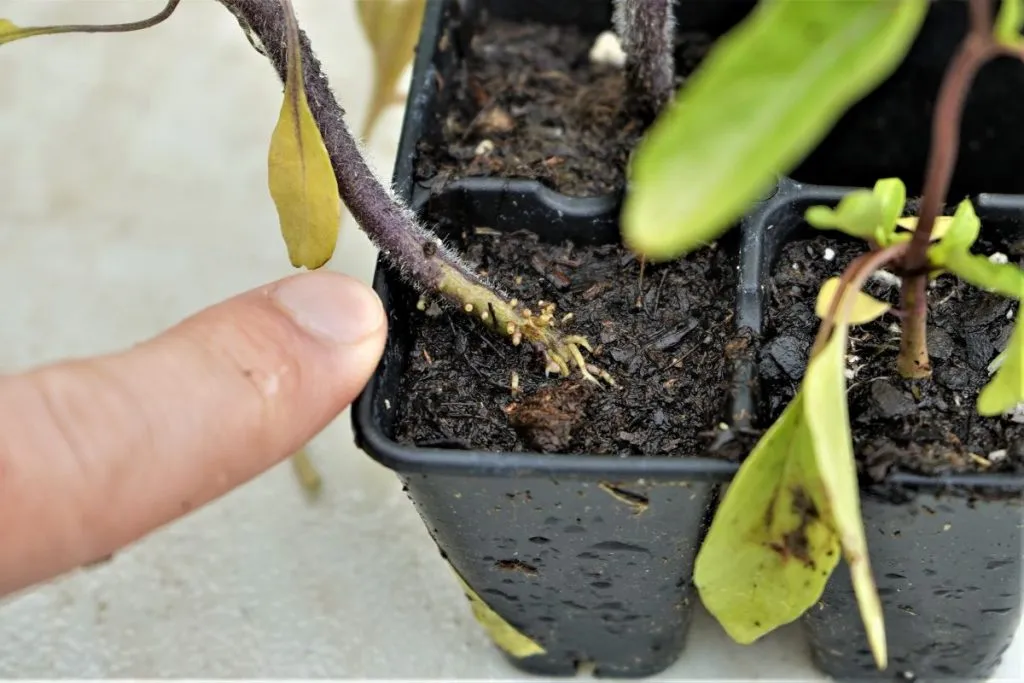Ad Blocker Detected
Our website is made possible by displaying online advertisements to our visitors. Please consider supporting us by disabling your ad blocker.
Another similar method involves planting tomatoes sideways. The outcome is similar, but both techniques can lead to a better result for your tomato plants.
In this article, we’ll explore both of these methods; planting deeply and “trenching” tomatoes. I’ll also cover why using these methods might just be the best way of planting tomatoes if you want the best possible yield. Let’s get started!
Planting Tomatoes Deep
Since the dawn of home gardening, there have been word-of-mouth “secrets” to a healthier, more productive garden. I can’t exactly pinpoint when the notion of planting tomatoes deep started, but today, it is basically a rule of thumb.
Essentially the idea is to dig a hole that is deeper than the root ball, burying the tomato stem up to the first true leaf. Compare this to planting a tree, where it is only advised to plant at the same depth as the root ball.
The method seems logical, and I do personally recommend planting tomatoes deeply for the reasons above. If you have doubts, try a simple experiment to see which works better for you.
How Does It Work?
The reason that planting deeply is even possible is thanks to adventitious roots. Essentially, when a tomato stem is exposed to certain conditions, it will begin to form roots directly from the stem tissue.
I often get questions like, “What are those white, nubby bumps on my tomato plant’s stem?” Those are adventitious roots, often caused by humid air or stuffy conditions around that part of the stem.

When planting deep or sideways, we are encouraging the buried portion of the stem to produce these new roots underneath the soil. The moist conditions quickly initiate their production, and the plant begins growing more roots.
How Deep To Plant Tomatoes
The perfect depth is not known for sure, but we have a good idea of where to start. It is best to plant tomatoes deep, well above the root ball, and as high as the first true leaf. Some prefer to go deeper, while others stay as shallow as the cotyledon leaves.
Follow these easy steps to plant tomatoes deep:
- Dig a hole that is as deep as the first true leaf. Measure from the bottom of the root ball up to the first true leaf. This should be the approximate depth of the hole.
- Remove the first true leaf. Cut off the first true leaf, along with the cotyledons. I prefer to do this 1-2 days prior to planting to give the wounds time to heal.
- Place the root ball into the hole and bury it. Simply plant your tomato in the deep hole, burying it in the soil’s surface.
- Water deeply. Since the roots are deep below the surface, be sure to irrigate heavily, right after planting.
Note: To avoid possible confusion, do not plant tomato seeds deep. When planting tomato seeds, they should only be about 1/8″ below the surface.

